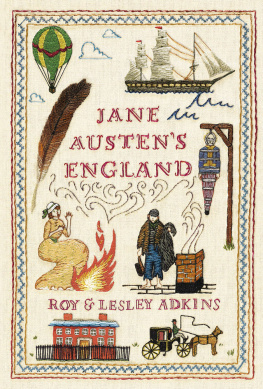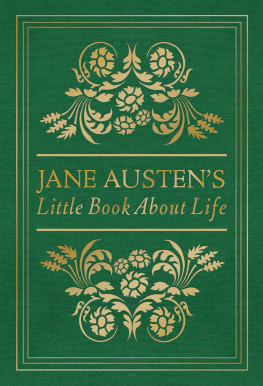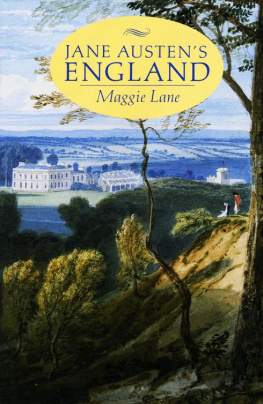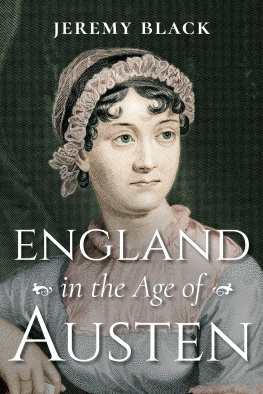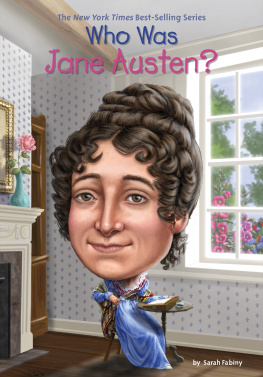Also by Roy and Lesley Adkins
THE KEYS OF EGYPT
EMPIRES OF THE PLAIN
TRAFALGAR
THE WAR FOR ALL THE OCEANS
JACK TAR
Jane Austens
England
ROY and LESLEY ADKINS

VIKING
VIKING
Published by the Penguin Group
Penguin Group (USA) Inc., 375 Hudson Street,
New York, New York 10014, USA

USA | Canada | UK | Ireland | Australia | New Zealand | India | South Africa | China
Penguin Books Ltd, Registered Offices: 80 Strand, London WC2R 0RL, England
For more information about the Penguin Group visit penguin.com
Copyright Roy Adkins and Lesley Adkins, 2013
All rights reserved. No part of this book may be reproduced, scanned, or distributed in any printed or electronic form without permission. Please do not participate in or encourage piracy of copyrighted materials in violation of the authors rights. Purchase only authorized editions.
First published in Great Britain as Eavesdropping on Jane Austens England by Little, Brown, an imprint of Little, Brown Book Group
Published by arrangement with Little, Brown Book Group
Map illustrations on by John Gilkes
Library of Congress Cataloging-in-Publication Data
Adkins, Roy (Roy A.)
Jane Austens England / Roy and Lesley Adkins.
pages cm
Includes bibliographical references and index.
ISBN 978-1-101-62286-5
1. EnglandSocial life and customs19th century. 2. EnglandSocial life and customs18th century. 3. Austen, Jane, 1775-1817. 4. EnglandIn literature. I. Adkins, Lesley. II. Title.
DA533.A35 2013
942.07dc23
2013016959
To Anne and David Barclay
For their friendship, support and encouragement
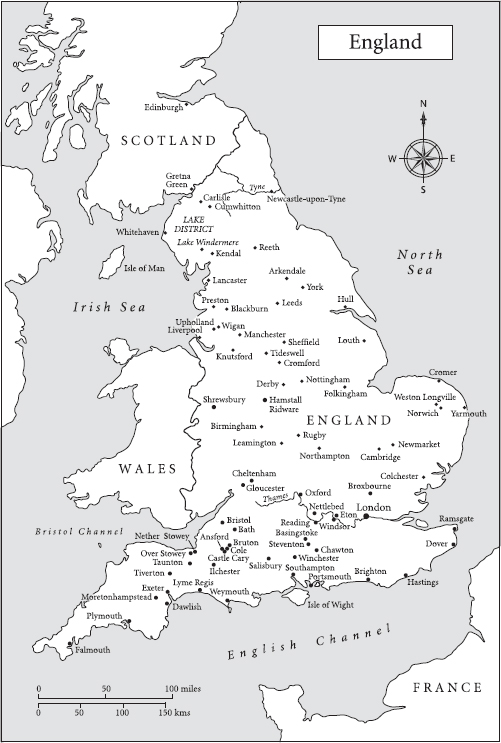
England with the main placenames mentioned
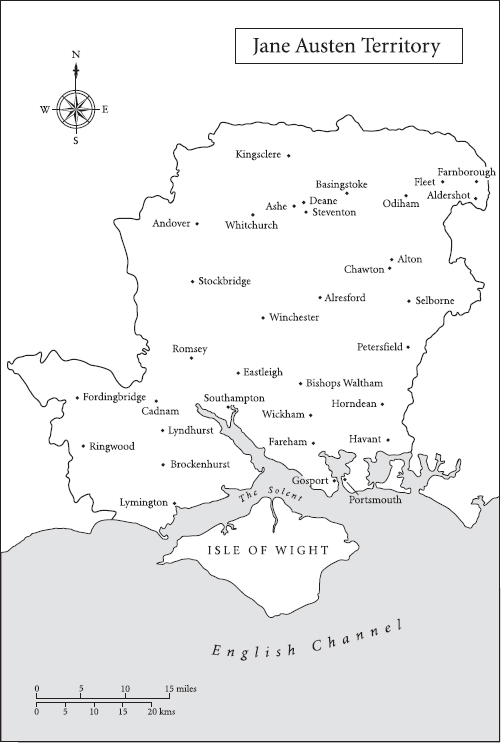
Map showing the main places in Hampshire, where Jane Austen lived

Map showing the main places around Over Stowey in Somerset, where William Holland lived
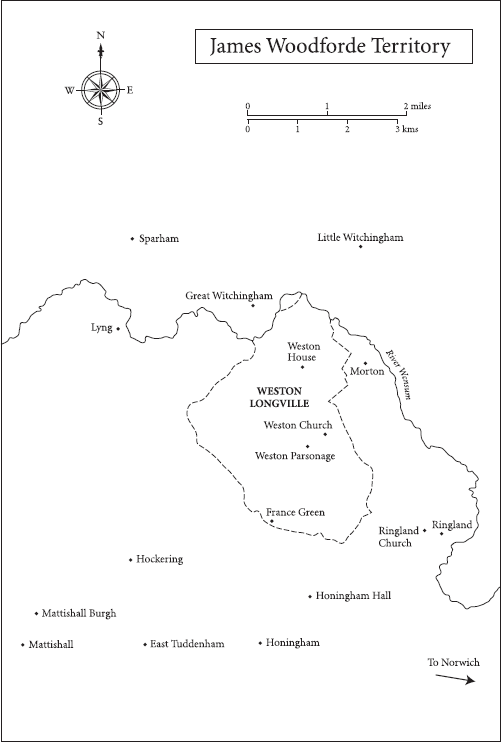
Map showing the main places around Weston Longville in Norfolk, where James Woodforde lived for many years. The parish boundary is shown as a dashed line

The counties of England and Wales in 1809, with major place-names and mail coach routes. The English counties (as spelled on the map) are: 1. Northumberland; 2. Cumberland; 3. Durham; 4. Yorkshire; 5. Westmoreland; 6. Lancashire; 7. Cheshire; 8. Shropshire; 9. Herefordshire; 10. Monmouthshire; 11. Nottinghamshire; 12. Derbyshire; 13. Staffordshire; 14. Leicestershire; 15. Rutlandshire; 16. Northamptonshire; 17. Warwickshire; 18. Worcestershire; 19 Glocestershire; 20. Oxfordshire; 21. Buckinghamshire; 22. Bedfordshire; 23. Lincolnshire; 24. Huntingdonshire; 25. Cambridgeshire; 26. Norfolk; 27. Suffolk; 28. Essex; 29. Hertfordshire; 30. Middlesex; 31. Surrey; 32. Kent; 33. Sussex; 34. Berkshire; 35. Wiltshire; 36. Hampshire; 37. Dorsetshire; 38. Somersetshire; 39. Devonshire; 40. Cornwall
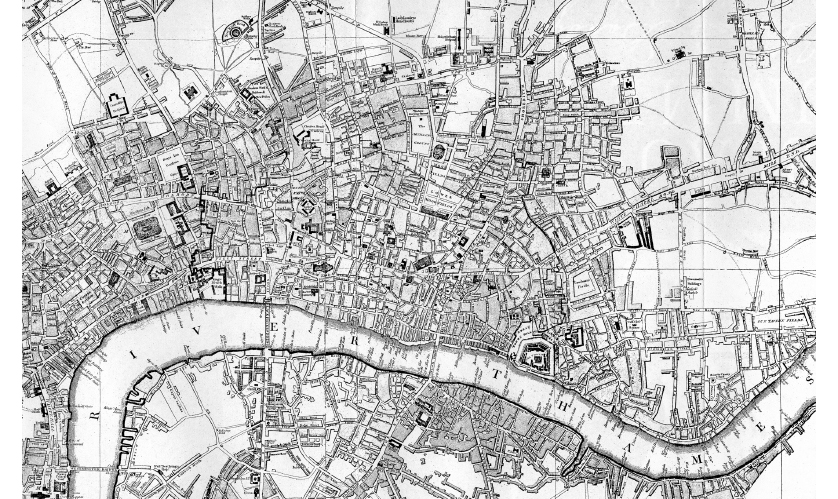
A 1797 map of London showing Covent Garden, the British Museum and the Foundling Hospital on the west side, extending to Whitechapel Road and Mile End on the east. Southwark lies to the south of the River Thames
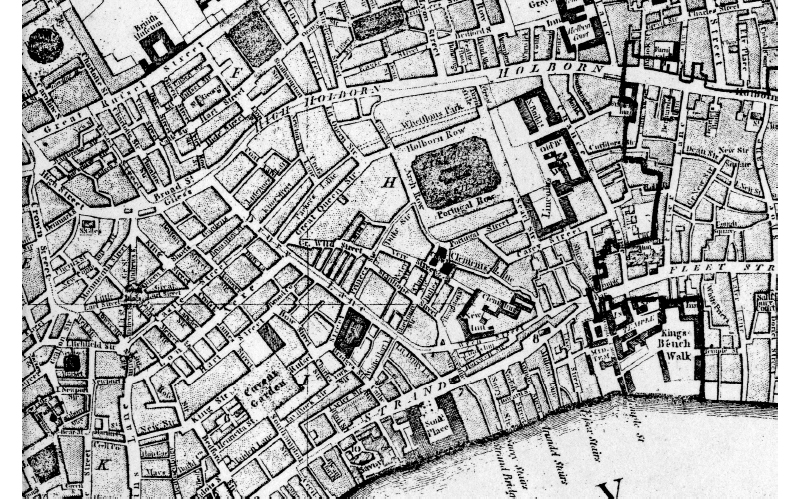
Detail from a 1797 map of London, with Holborn running from east to west, St Giles on the left and Fleet Street, Strand and Covent Garden at the bottom
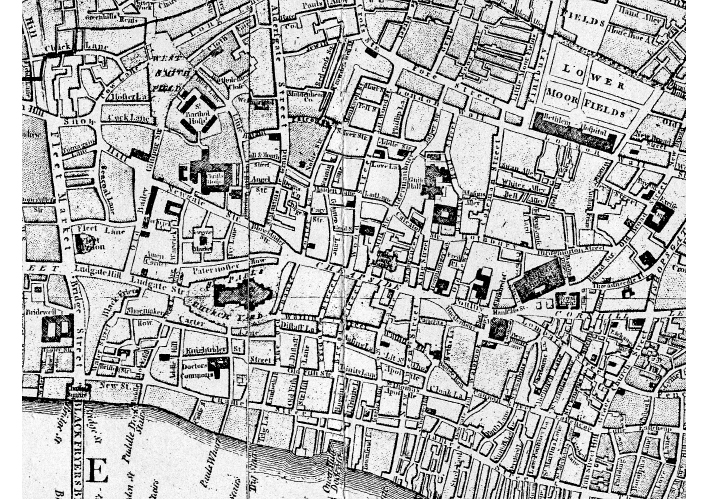
Detail from a 1797 map of London, with (from left to right) Blackfriars Bridge, Ludgate Hill, St Pauls cathedral, Bethlem Hospital and the Royal Exchange (the Bank of England is adjacent)
INTRODUCTION

KNOW YOUR PLACE
One does not love a place the less for having suffered in it, unless it has been all suffering, nothing but suffering.
Persuasion, by Jane Austen
The place is an austere, wartime England. In the north Hampshire village of Steventon, Jane Austen was born in December 1775, and just 12 miles away in the cathedral city of Winchester, she died in July 1817. Such a short distance separates her birth and death, yet during her lifetime of forty-one years she travelled more than most women of this era, westwards as far as Dawlish in Devon, eastwards to Ramsgate in Kent, southwards to Portsmouth and probably as far north as Hamstall Ridware in Staffordshire.
Yet wartime England makes only a low-key appearance in Jane Austens novels. George Wickham, the villain of Pride and Prejudice, is a lieutenant in the militia who is bought off with a commission in the regular army, while Fanny Price in Mansfield Park has a brother in the Royal Navy and a father who is a retired marine lieutenant. War forms a backdrop to the novels, but no fighting took place on English soil men sailed away to war at sea or in other lands. Even so, military men, preparations for war and foreign prisoners-of-war were encountered everywhere, and the threat of invasion by the French generated immense unease and, at times, panic. With a strong and efficient British navy, the danger of invasion was in fact small, but public perception was different. Invasion scares helped to make the population tolerate relentless rises in taxes, much of which went on the wars and on the extravagant royal family. This was a time of glaring disparity between the immensely rich minority and the poor majority, who suffered from steep rises in the price of food and from falling wages. It is hardly surprising that a good deal of support was shown for the French Revolution when it began in 1789.
The ruling class and the Church of England dreaded such an uprising in which they might be stripped of power and even put to death if the country became a truly democratic state. The Reverend William Holland, a Somerset clergyman whose background and status were similar to that of Jane Austens father, was forthright in his views about some of the lower classes: They expect to be kept in idleness or supported in extravagance and drunkenness. They do not trust to their own industry for support. They grow insolent, subordination is lost and [they] make their demands on other peoples purses as if they were their own.

